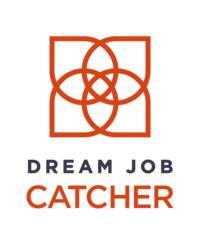In my last article, I shared how to network strategically — finding connections at target companies. Securing meetings is a feat in itself, but they can be a wasted opportunity if you’re underprepared and uncertain of what you want.
You can make every informational count and show up as your authentic self by following these best practices.
Define your goals
If you don’t know why you’re meeting this person, they won’t know either. You won’t be able to effectively guide the conversation or get what you want. So create clarity by defining your goals beforehand. Here are some typical ones:
- Gain intel: learn more about the person (their experience at the company), the company and its culture, relevant and growing teams, etc.
- Surface open opportunities the person may know of. Even if they don’t know of any, they can give advice on the best way to pursue a role there.
- Receive referrals for specific or future roles. Also learn about how the referral and hiring process work.
- Get introductions to key people including team members, hiring managers and recruiters.
Prepare and practice
If you believe you’re best when you’re winging it, I invite you to rethink your stance (which also happens to be Adam Grant’s topic in his latest book). While you don’t need to prep as much as you would for an interview, you need to treat it as a pre-interview. More often than not, our clients move onto an interview after an informational.
- Research the person: look at mutual connections, previous companies and roles they’ve had. Look at their activity to see what they’re interested in.
- Research the company: look at their website for info on core products, core values, mission and community/volunteer involvement. Check out their social media channels.
- Write and practice your elevator pitch. The one question you can expect in all your informationals and interviews is “Tell me about yourself.” It’s very challenging to improvise a well-crafted pitch in under 2 minutes.
- Practice answers for these commonly asked questions: “What are you looking for,” “Why are you interested in leaving your company,” “What do you want to do long-term” and “Why are you interested in this company?”
- Prepare thoughtful questions for them. They may have an interesting career path that you want to learn about. Or you may want to find out more about the company culture or its growth trajectory. Here are some examples of good questions:
- What makes a person successful there?
- Why did you join the company?
- What do you like most about working there and what do you find most challenging?
- What’s one thing that most people don’t know about the company?
- How does the company support career development?
- What are the key objectives/priorities this year?
- What’s the vision and/or direction for the company? Or what’s the next big thing for the company?
Make specific requests
If you’ve ever said, “Well, let me know if you hear of anything,” you know that nothing much ever happens. The more specific you are with requests, the more help you’ll get. And when you make a good impression, they’ll often proactively offer to help. Sometimes they know exactly what to offer and sometimes they don’t. So be prepared to ask directly — aligning to the goals you’ve set. Here are some examples:
- What’s the best way for me to pursue a role here? Would you be willing to refer me for this role and other opportunities?
- Do you know anyone in the _____ group? Would you be willing to make an introduction to them? Or Is there anyone else I should meet with on the ______ team?
- Do you know who the hiring manager or recruiter is for this role? Would you be willing to make an introduction? Or Would you mind sending them my resume for this role?
Pro tips: don’t send your resume before an informational unless they ask for it. Send it in your follow-up email where you recap their offer to help with X and Y.
Also write a short blurb (3-4 sentences) about yourself that they can copy and paste in an email introduction.
Be fully present, grateful and open
The final piece is about how you show up. These are the intangible, but significant ways that will cement a positive impression.
- Be fully present throughout the meeting. Turn off notifications and find a quiet space where you can relax and focus. It also helps to take a few deep breaths before the call to ground yourself.
- Show your gratitude. Thank them for taking the time to meet with you. End with thanking them. Thank them again in your follow up email.
- Be open. If your contact wants to dive deep into something you weren’t expecting, don’t force your talking points, just go with the flow. Also be an active listener and never interrupt. Just listen, answer questions directly and ask good follow-up questions — it’s a sure fire way to make a good impression and build a strong relationship.
When you know the why, what and how of networking, you’ll be able to make a good connection and get the help you need and deserve.
Are you looking to land a job that you’ll love and thrive in? If so, then watch our video and book a session with one of our job strategists. We’re excited to talk to you!




Comments Off on How to network strategically and authentically — part 2